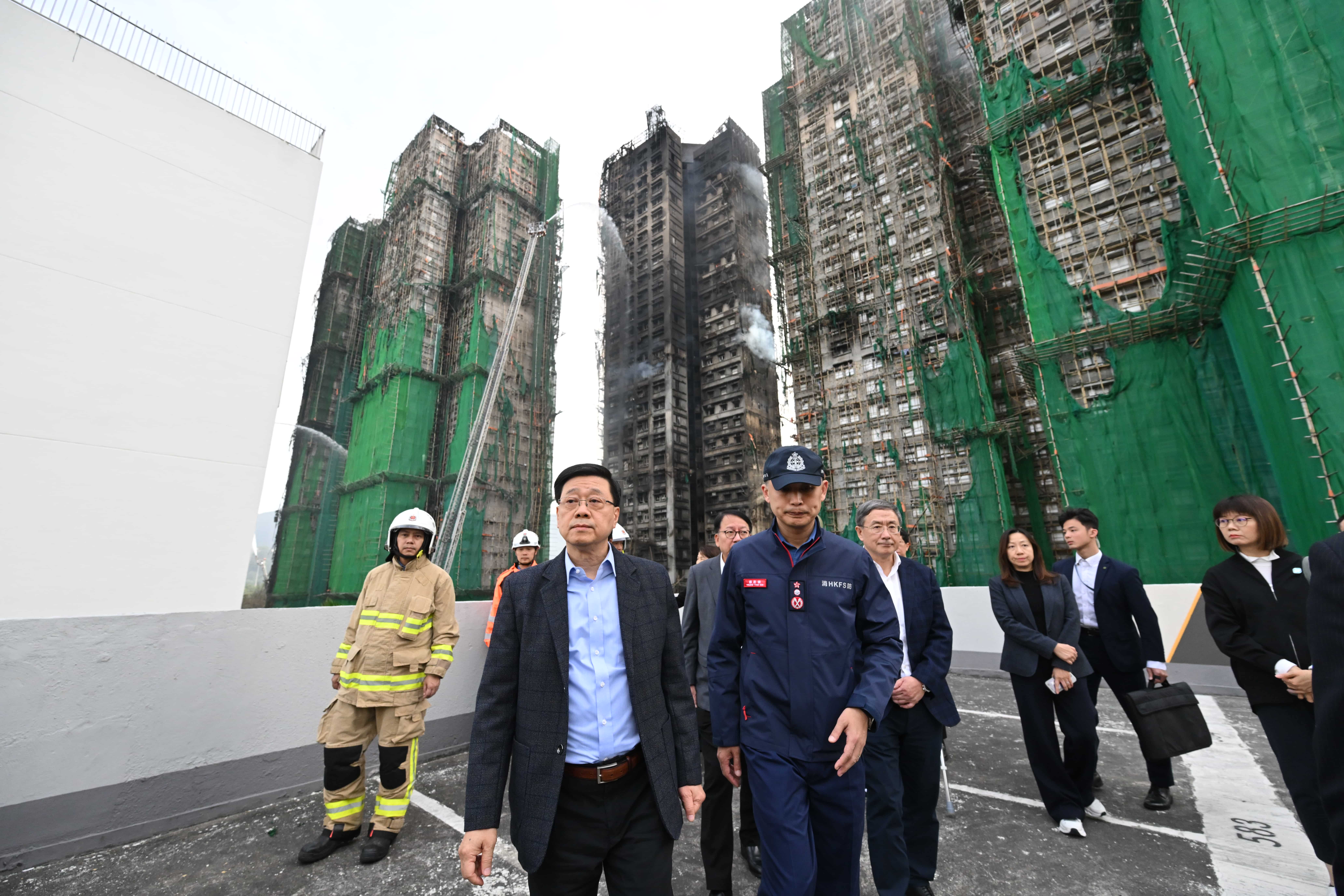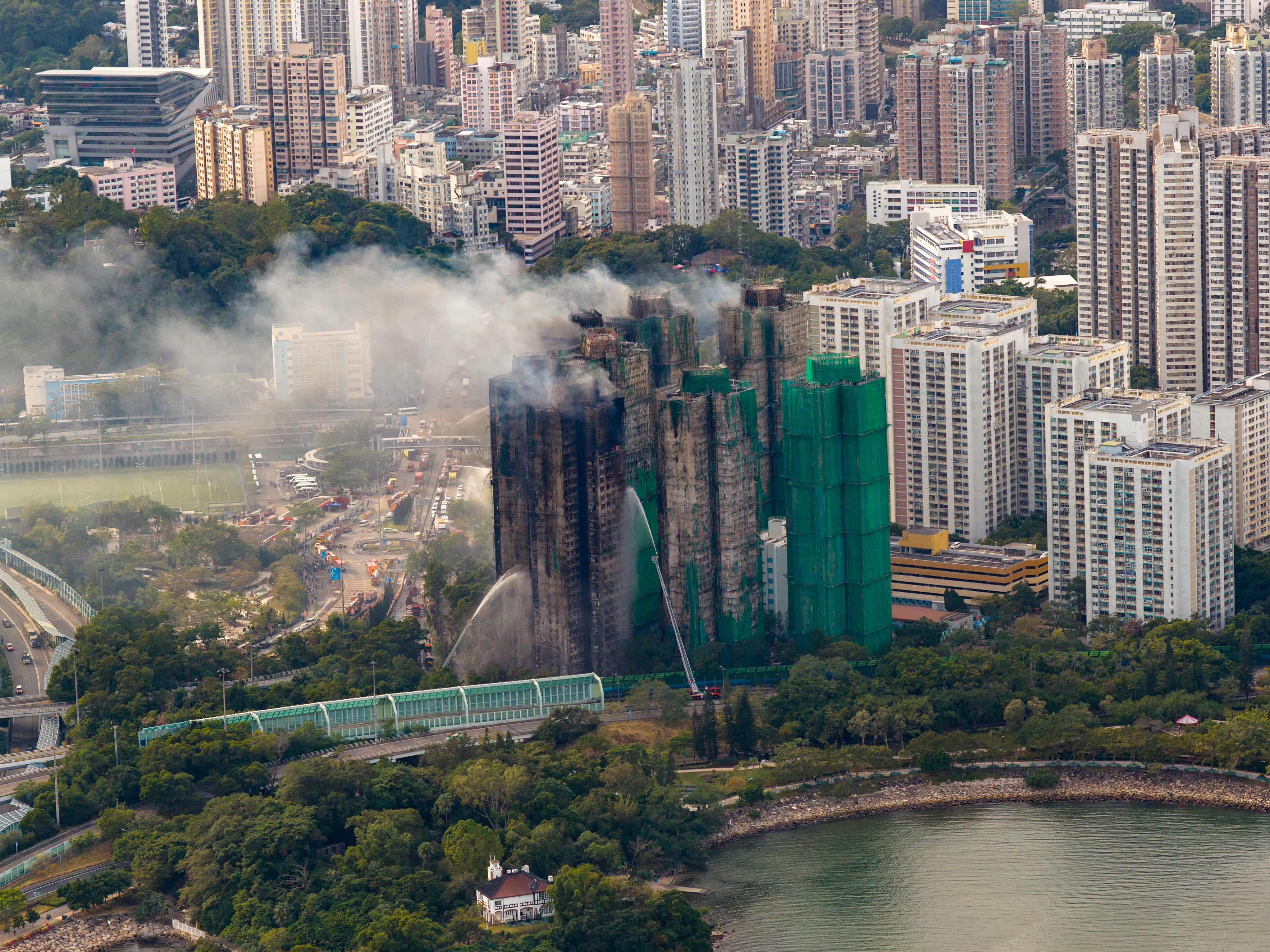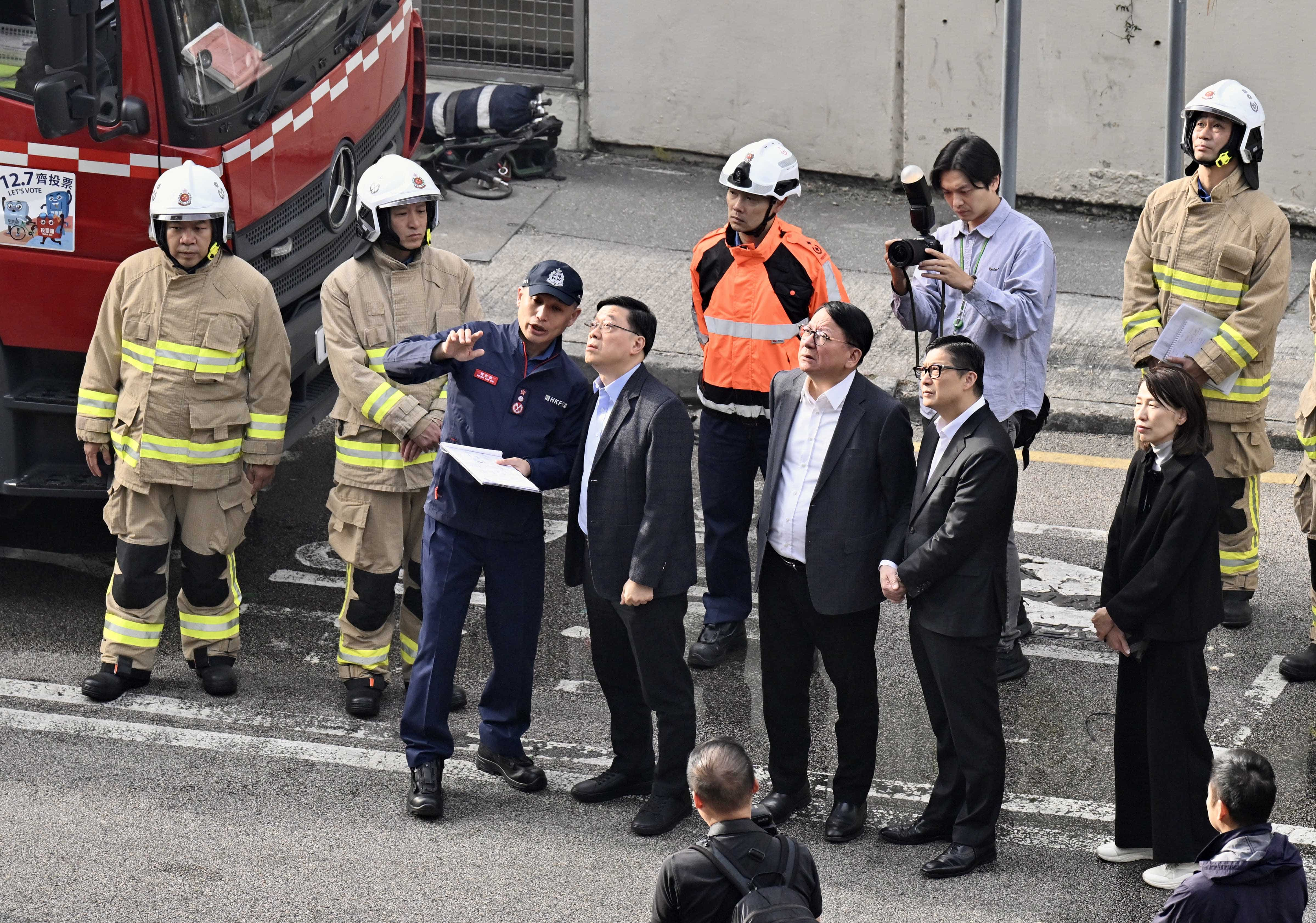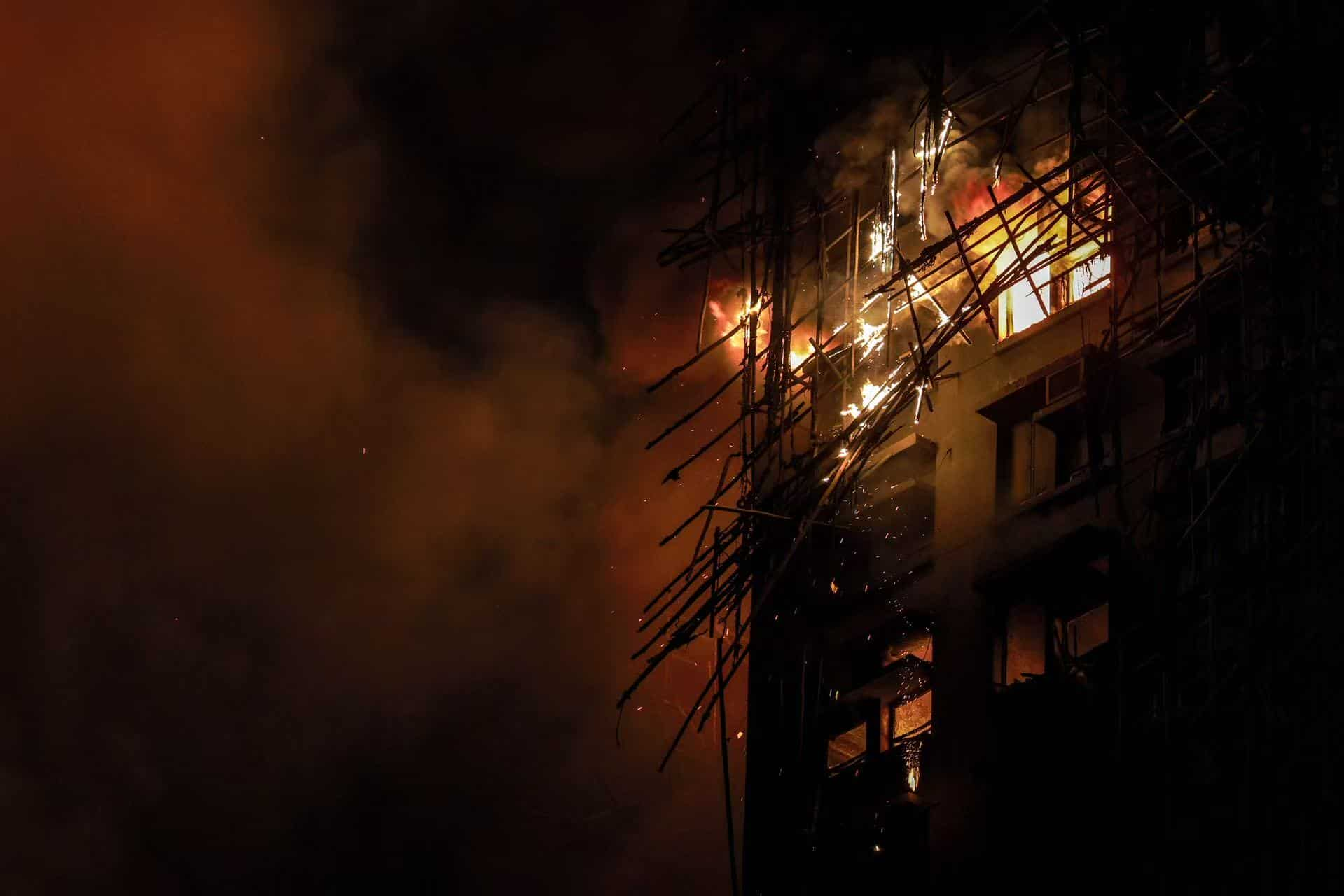
Experts are urging tighter controls on building materials, enhanced site management, and stronger oversight in the wake of the deadly No 5 alarm fire at Wang Fuk Court, where preliminary probes have identified the suspected use of non-compliant flammable materials.
As of 3 pm on Thursday, the blaze that broke out at around 2:51 pm on Wednesday, lasting for nearly a day, had resulted in 55 fatalities, including one firefighter, with 279 people still missing. The flames, which at the height of the fire engulfed seven of the estate’s eight blocks, are yet to be put out. Fires at four of the affected blocks had been contained as of noon on Thursday.
ALSO READ: LIVE: Tai Po fire death toll hits 55, rescue efforts on
The court buildings were undergoing large-scale renovation at the time of the incident. The police said that the protective netting, sheeting, tarpaulins, and plastic covers installed on the exterior of the affected building likely failed to meet fire safety standards.

During a media briefing early on Thursday, Senior Superintendent Eileen Chung Lai-yee of the police force's New Territories North regional headquarters, shared preliminary findings, noting that Styrofoam — a highly flammable material — had been used to seal elevator lobby windows on each floor of the building that was not affected by the fire.
Chung stated that the Styrofoam could have accelerated the spread of the fire and is being considered as a possible factor in determining what caused the rapid progression of the blaze.
READ MORE: Tai Po fire may burn until Thursday evening, 3 held for manslaughter
A resident who escaped from the top floor revealed on social media that his windows were almost entirely sealed with Styrofoam, leaving only narrow gaps that prevented them from opening fully and did not allow for a clear view of outside. This, combined with the fact that many residents kept their windows closed due to construction dust, meant that many people were slow to realize that the bamboo scaffolding outside was engulfed in flames.

In the early hours of Thursday, police arrested three local men aged between 52 and 68 on suspicion of manslaughter. Those detained — two directors and a project consultant from the renovation contractor — are currently in custody. The police also conducted a search of an industrial center in San Po Kong, where they took one man in for questioning and seized multiple documents related to the case.
In an interview with China Daily, Vincent Ho Kui-yip, president of the Hong Kong Institute of Building Safety and a seasoned surveyor, explained that protective nets and tarpaulin made from materials like nylon are typically used around traditional bamboo scaffolding during renovations to prevent concrete and debris from falling onto streets.

Since many of these materials are flammable, the Buildings Department requires them to be made flame-retardant — a process achieved either by adding fire-resistant substances during manufacturing or by applying treatments including spraying or immersion to ensure they self-extinguish if ignited.
However, Ho said that such materials have been involved in many previous incidents, adding that there is no regular regulatory review mechanism to ensure all materials are in compliance. Even if materials initially meet standards, he explained, damage or aging can reduce their flame-retardant effectiveness.
READ MORE: Companies donate supplies to Tai Po blaze victims
Ho also suggested that negligent site management could have also contributed to creating the conditions that would accelerate the blaze, noting that construction debris accumulated at the site could have intensified the fire. With Hong Kong entering the winter season — a period of lower humidity and drier air — Ho said that contractors must enforce strict fire prevention measures, including measures to prevent smoking where necessary.

The bamboo scaffolding surrounding parts of the building has attracted significant public attention, Ho said, adding that while the government has long encouraged the use of more stable metal scaffolding, which is already in use at some sites, parts of the private sector remain reluctant to adopt it. This is because of the high initial cost and the practical challenges posed by Hong Kong’s high-rise buildings with narrow floor gaps. Metal frames are much heavier and require more space to install, he said.
Ho predicted that the tragedy might accelerate the shift toward metal scaffolding, but added that flexible, context-sensitive solutions may be more suitable for Hong Kong’s unique urban environment.
Contact the writer at amberwu@chinadailyhk.com


